Featured Images
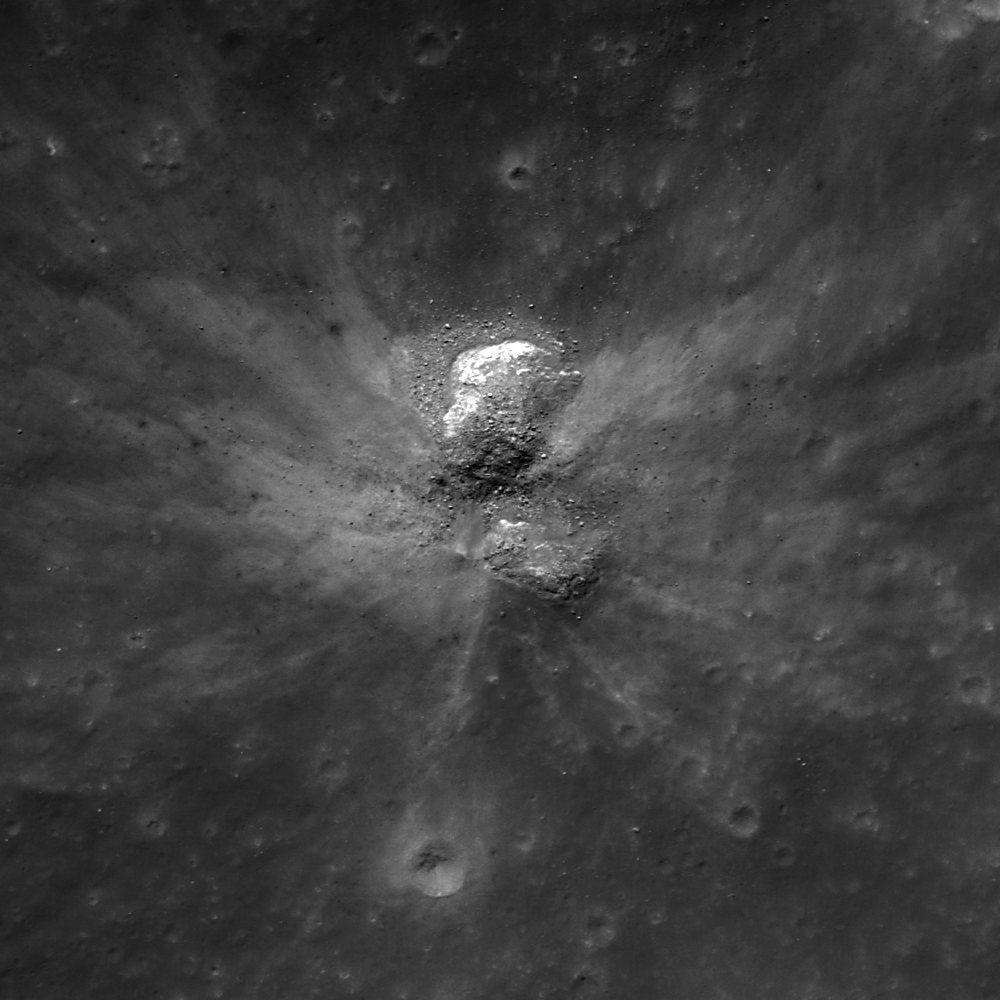
How did I form?
Small fresh crater in Palitzsch B, with a shape and ejecta pattern typical of an oblique impact. North is up, image width is 500 m, LROC NAC M154785423R [NASA/GSFC/Arizona State University].
Published on 18 Apr 2011
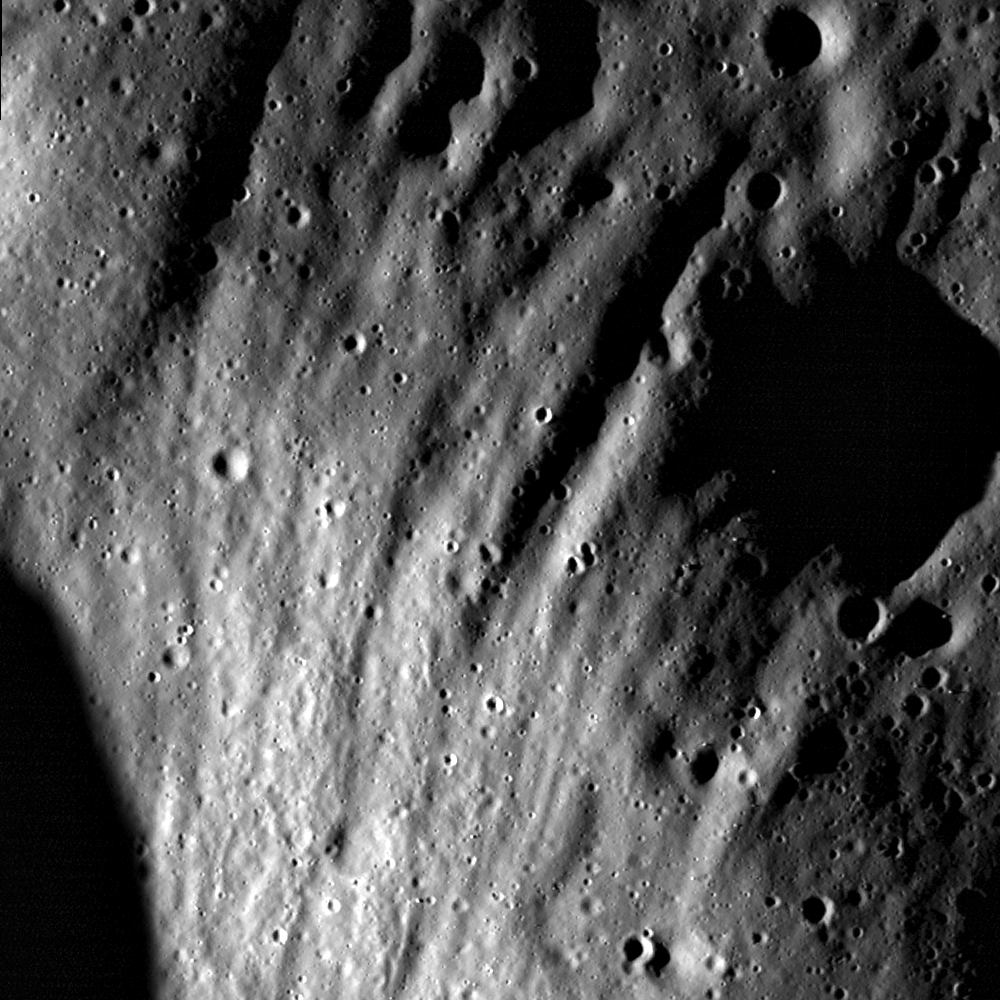
Scouring secondary ejecta
Ejecta scours deep grooves into the walls and rim of an unnamed crater, located northwest of Henry Frères crater. Image width is 600 m, illumination is from the left, LROC NAC M148563335L [NASA/GSFC/Arizona State University].
Published on 23 Mar 2011
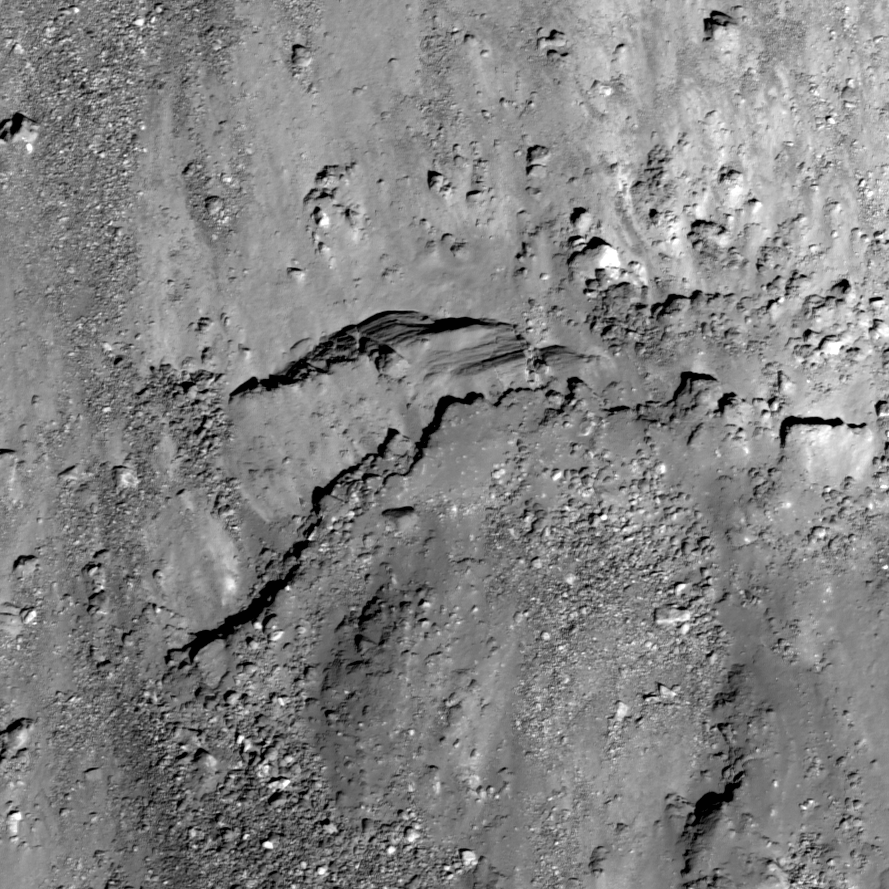
Stratified Ejecta Blocks
A stratified ejecta block around an unnamed fresh crater on the far side of the Moon, NAC frame M110757216R (127.61°E, 13.13°N). Incidence angle is 24°, scale is 0.58 m/px [NASA/GSFC/Arizona State University].
Published on 01 Feb 2011
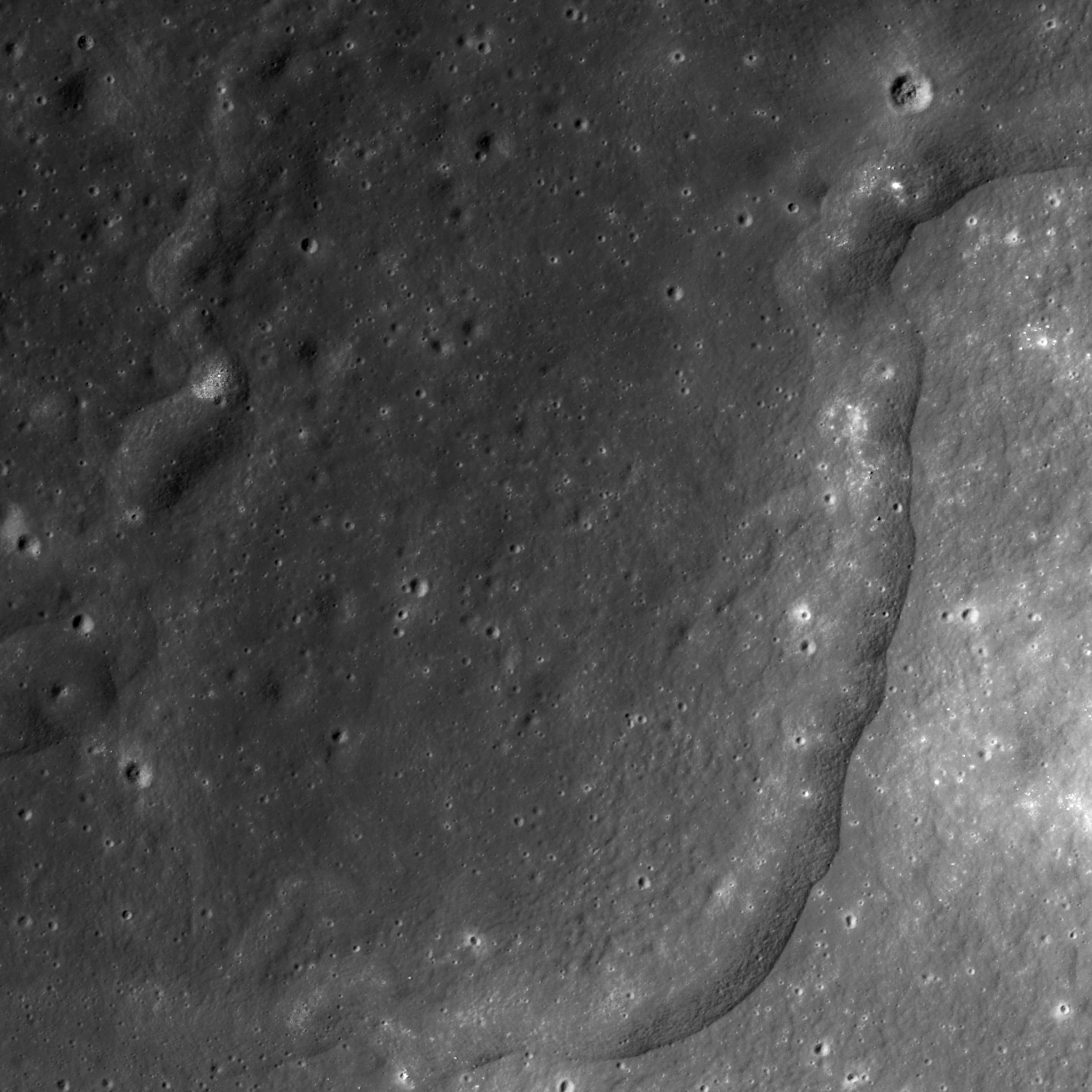
Wrinkle Ridges in Aitken Crater!
Mare basalts and hummocky ejecta both displaying wrinkle ridges in Aitken crater. NAC M105730242, image width is 1.6 km, Sun is from upper left [NASA/GSFC/Arizona State University].
Published on 20 Jan 2011
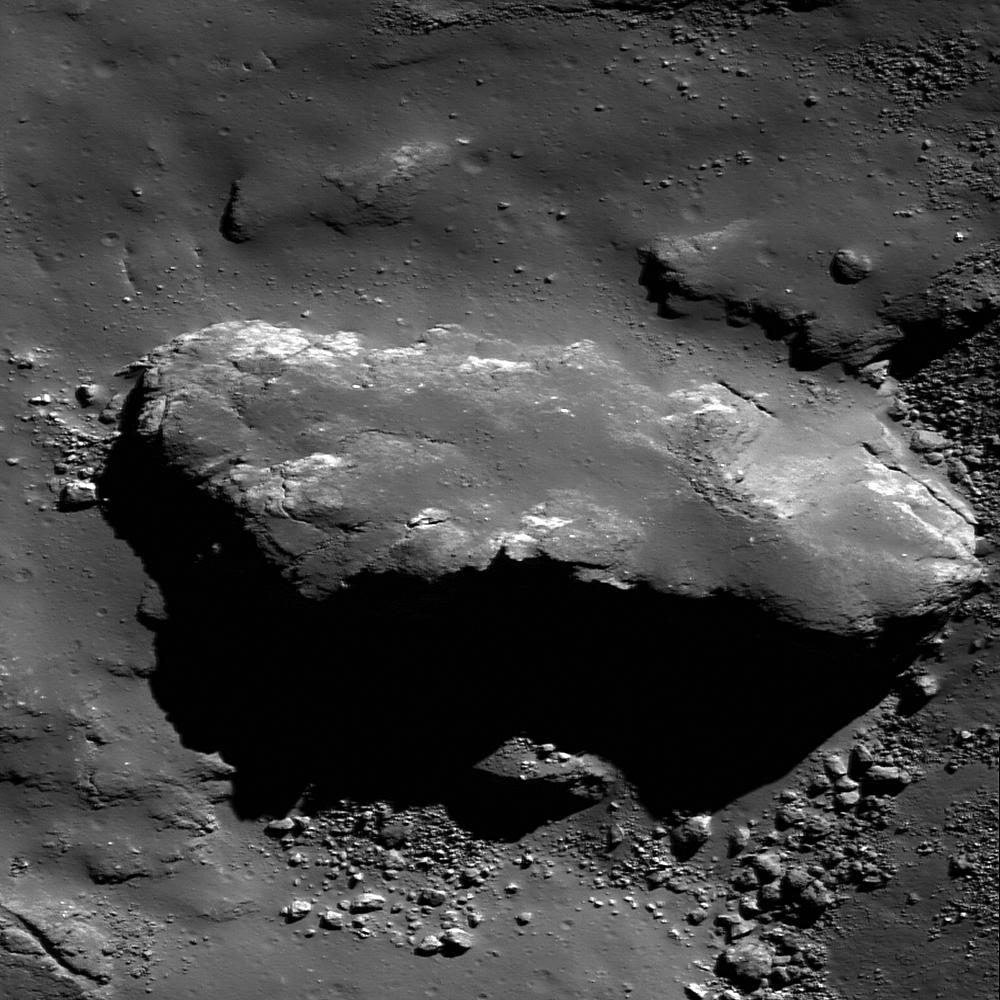
Ejecta in Tycho crater
320 m block of ejecta in Tycho crater covered by a veneer of impact melt. Image width is 370 m, LROC NAC 142334392RE [NASA/GFSC/Arizona State University].
Published on 08 Dec 2010
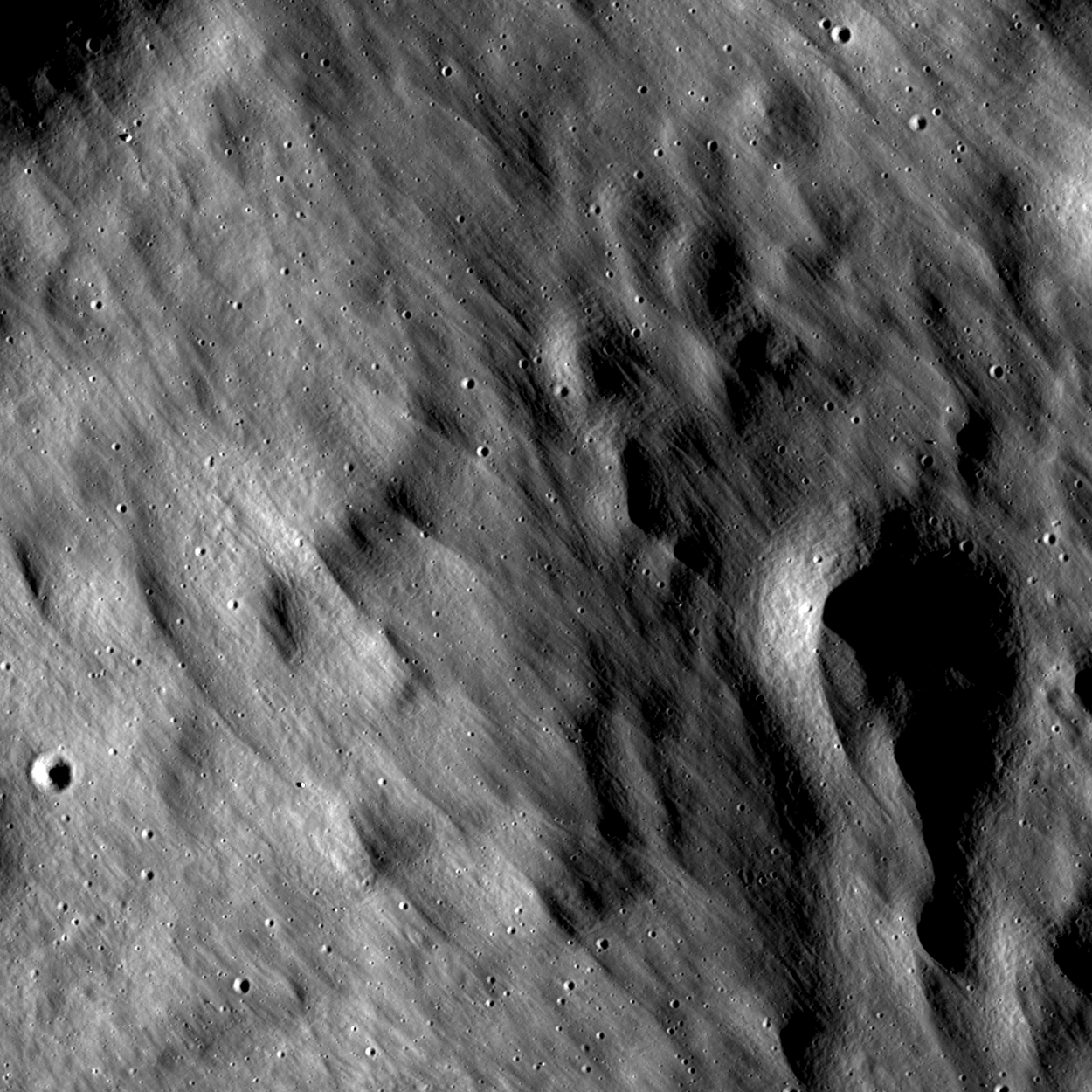
Delicate patterns in Giordano Bruno ejecta
Far edge of the Giordano Bruno crater ejecta blanket. LROC NAC M115617436L, 0.9 m/pixel, image width is 1.08 km, Sun is from right side. Giordano Bruno is to the northwest of image [NASA/GSFC/Arizona State University].
Published on 22 Nov 2010
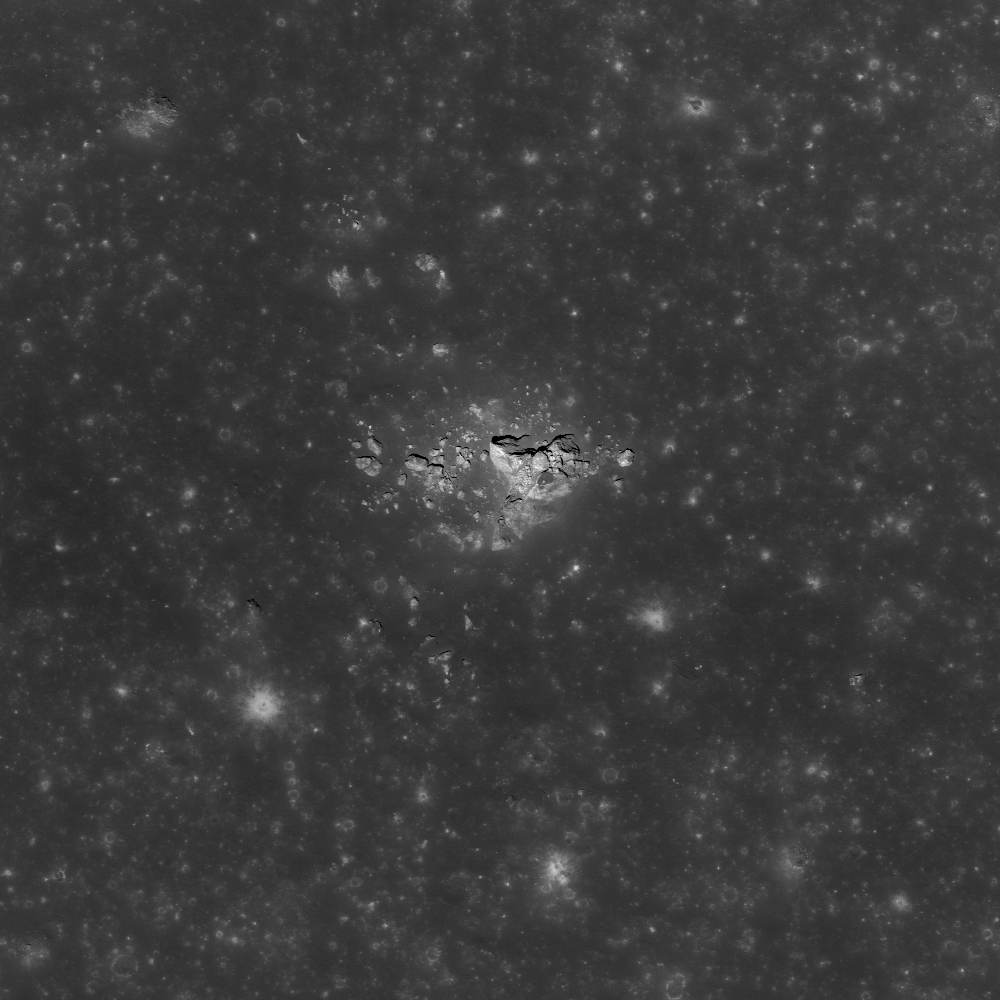
Kepler Crater Ejecta
Large boulder ejected from Kepler crater, a small depression from the boulder's impact is just visible. LROC NAC M140155410L, image width is 800 m [NASA/GFSC/Arizona State University].
Published on 09 Nov 2010
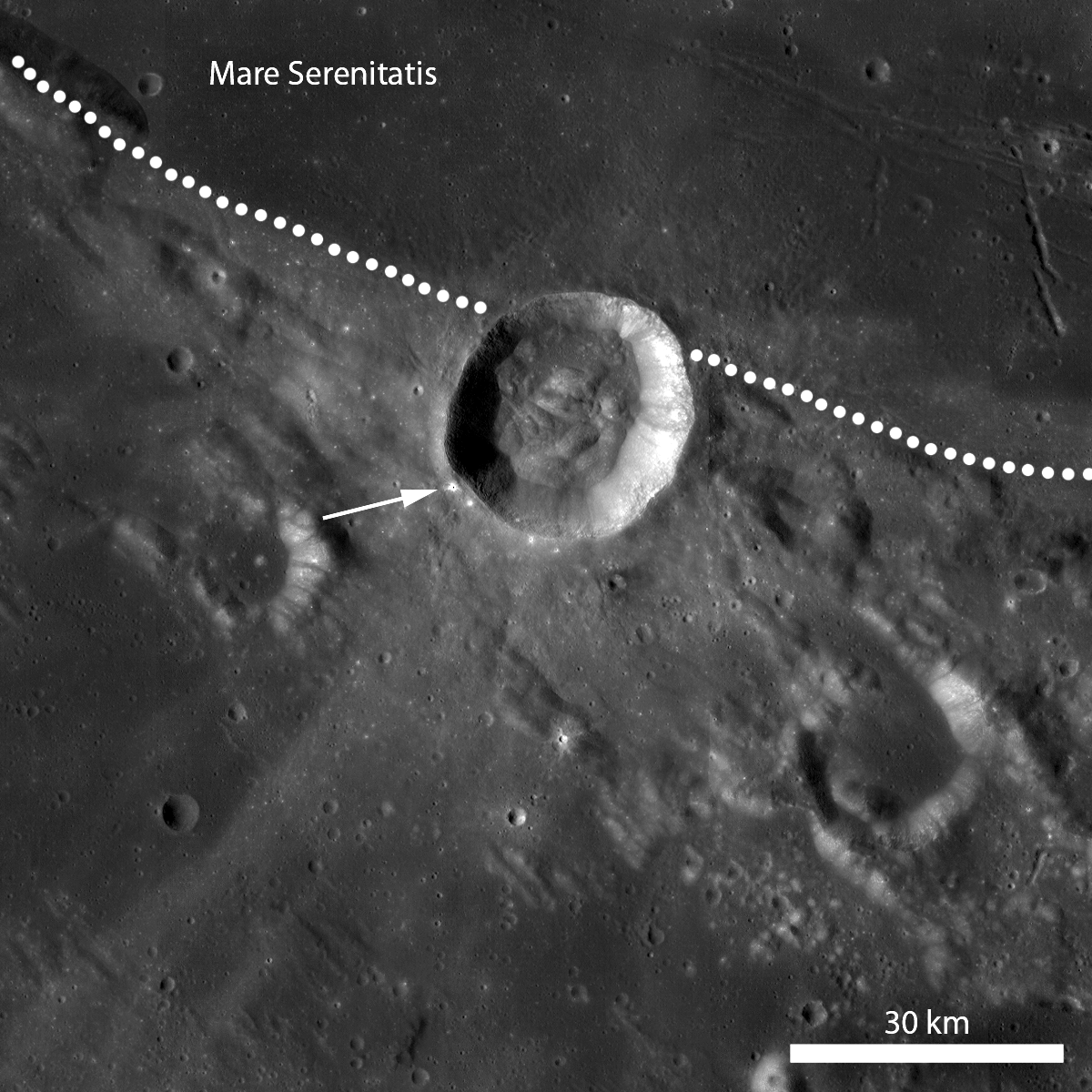
Small crater at the southern rim of Menelaus
LROC Wide Angle Camera mosaic of Menelaus crater at the boundary between Mare Serenitatis and the highlands (dotted line). Broad ejecta rays extend along the mare-highlands boundary and also in the NE-SW direction. In this image, the...
Published on 27 Oct 2010
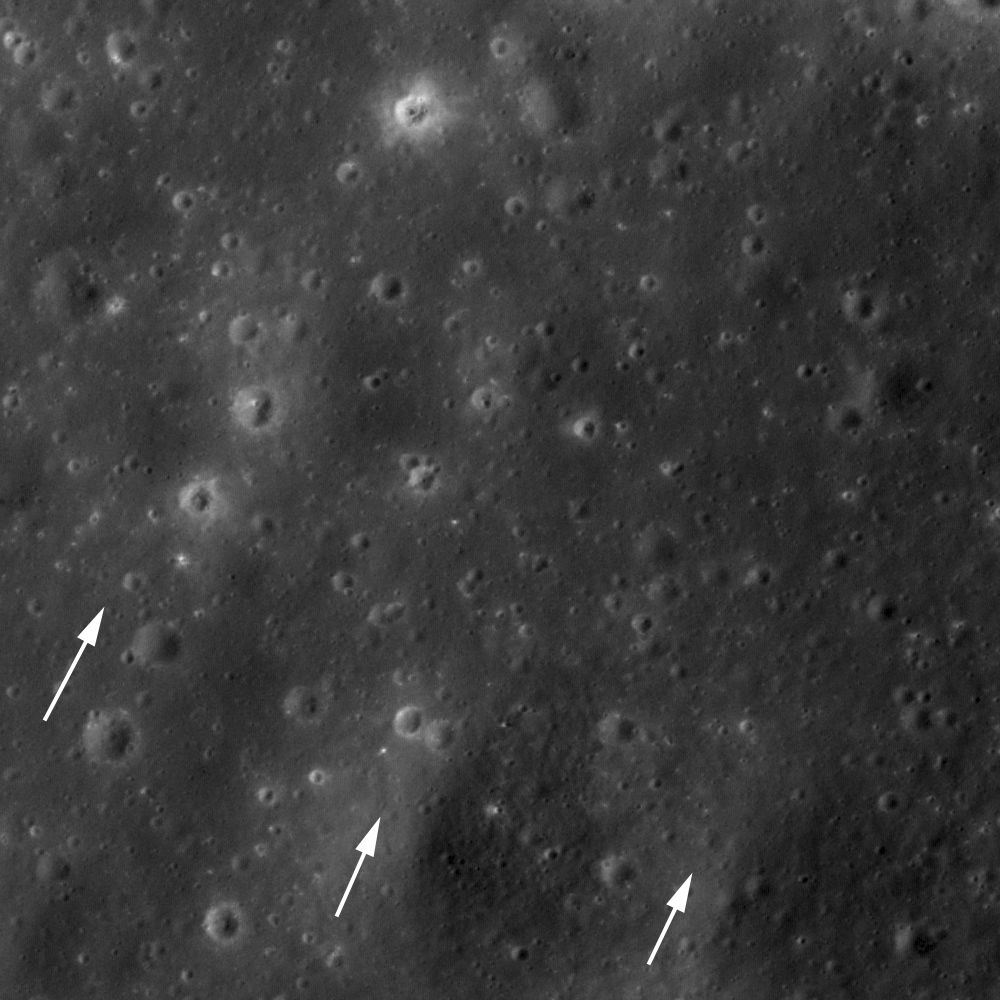
Ejecta from Copernicus
One of the geologic features that makes Copernicus crater special is its extensive, high-reflectance ejecta rays that extend across nearby mare and superpose (overlap) ejecta from other craters - Copernican ejecta extends more than 500...
Published on 30 Sep 2010
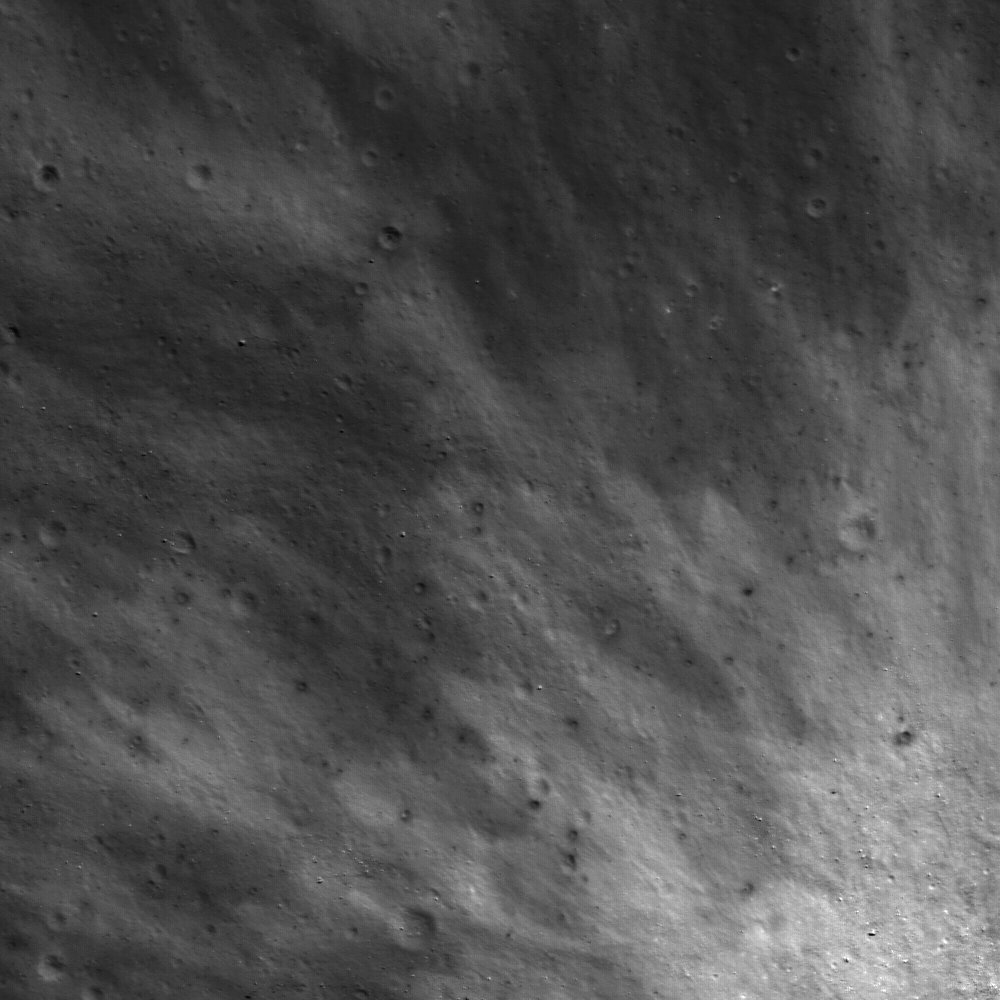
Ejecta Blanket
The pattern of ejecta from a young crater is still preserved on the floor of Van de Graaff crater. The variations in albedo (bright and dark areas in the ejecta) indicate either different surface exposure times, grain sizes, or...
Published on 23 Sep 2010
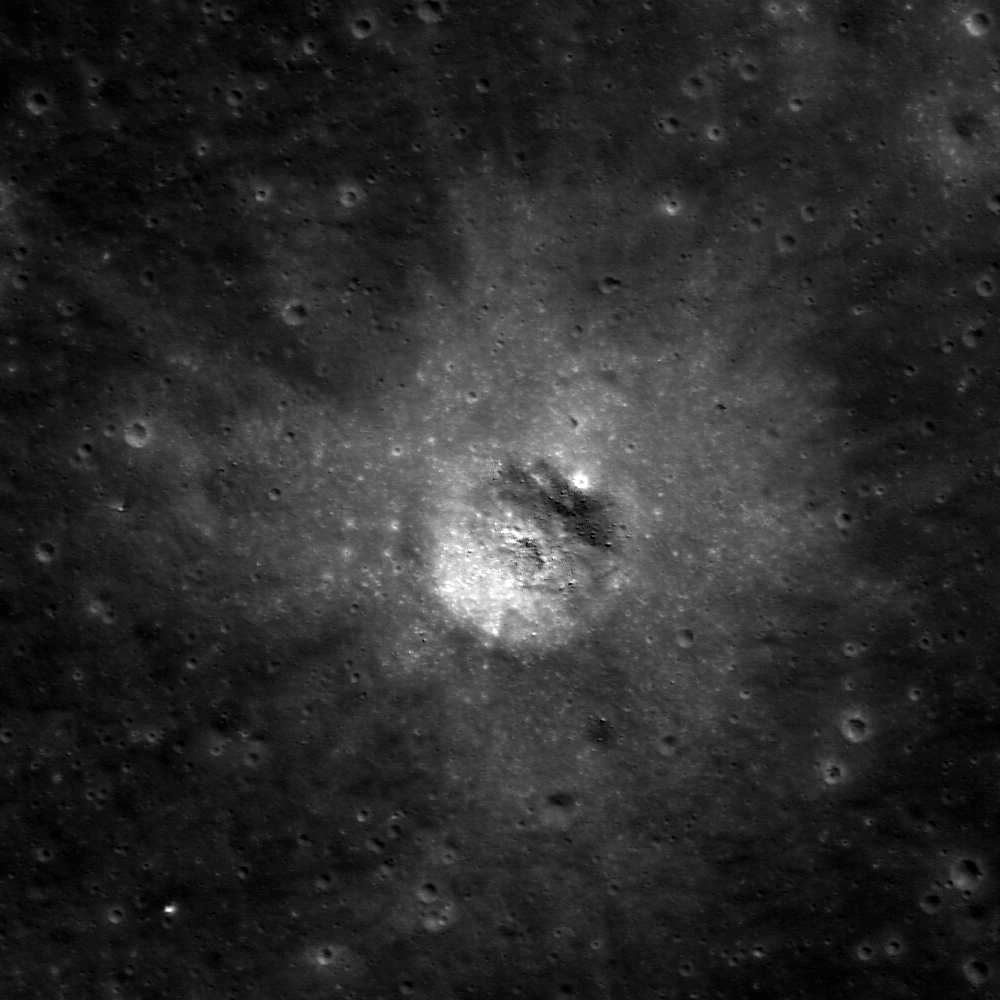
Immature Ejecta
This crater in the floor of Van de Graaff crater has a high reflectance ejecta blanket compared to the surrounding low reflectance material. The contrast in albedo is due to the crater excavating "fresh" or "immature" material from...
Published on 22 Sep 2010
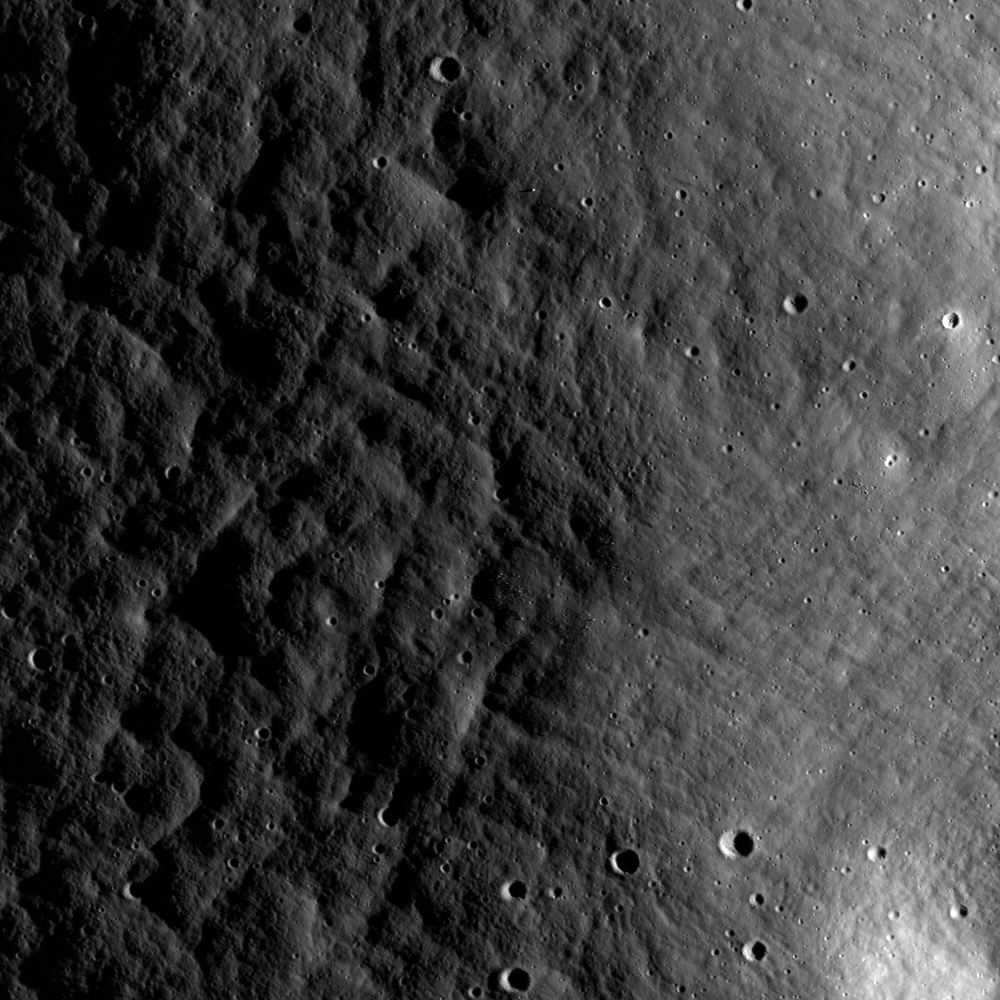
Ejecta from Van de Graaff Crater
The texture of ejecta thrown from Van de Graaff Crater along the northern rim, seen from a low Sun angle in the NAC image (incidence angle is 72°). This subset of the NAC image M115177455R has a width of 980 m [NASA/GSFC/Arizona State...
Published on 21 Sep 2010
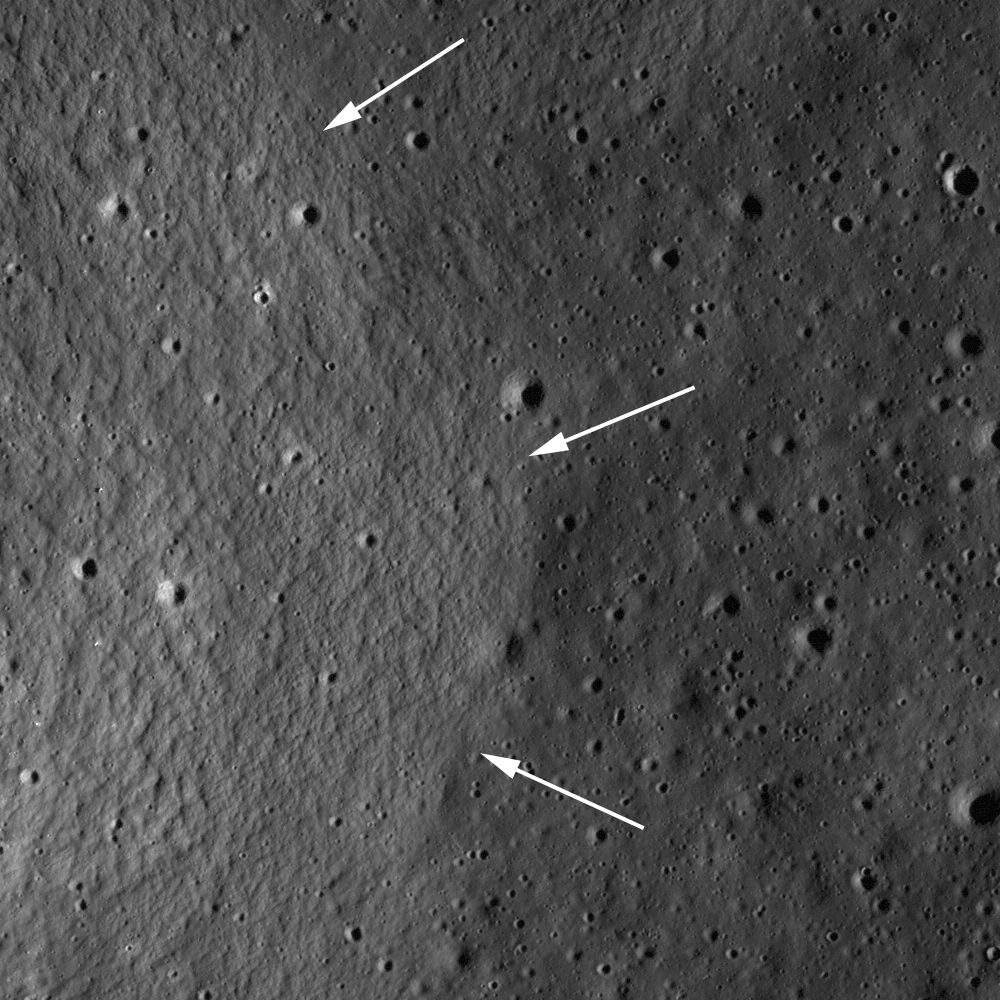
Remnants of the Imbrium impact
Mare basalts embayed ejecta structures formed by the massive Imbrium impact in LROC NAC image M131501983R. Arrows denote the contact between younger mare basalts and older Imbrium ejecta, image width is 902 m [NASA/GSFC/Arizona State...
Published on 03 Aug 2010
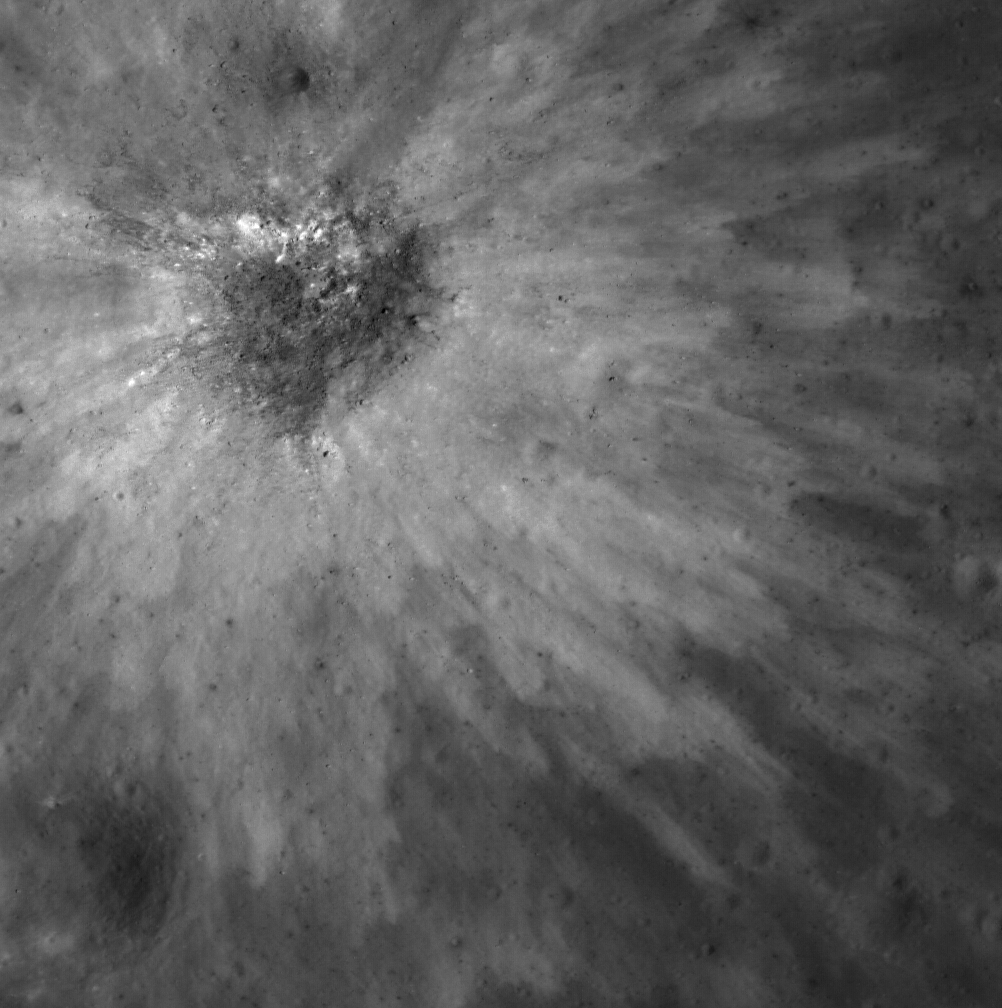
Intricate young ejecta blanket in ancient Murchison Crater
Overlapping petals of bright ejecta illustrate the complexity of ejecta emplacement, even in smaller impact events. The source crater is ~120 meters in diameter and lies on the floor of Murchison Crater, one of the Constellation...
Published on 09 Feb 2010
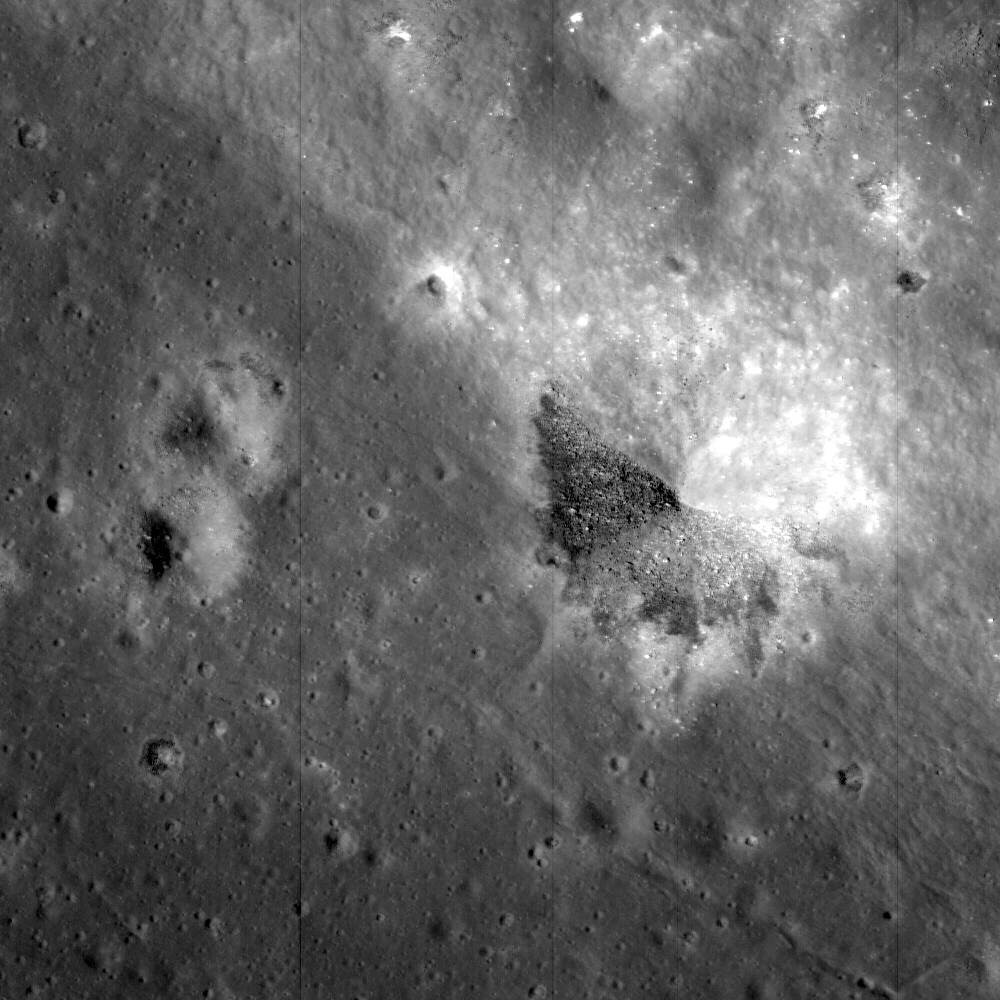
King Crater's Unusual Melt Pond
A Constellation Program Region of Interest near the northeast edge of the unusually large melt pond adjacent to the lunar far side crater King. The boundary between the dark, coherent impact melt rock at the lower left of the image and...
Published on 26 Jan 2010
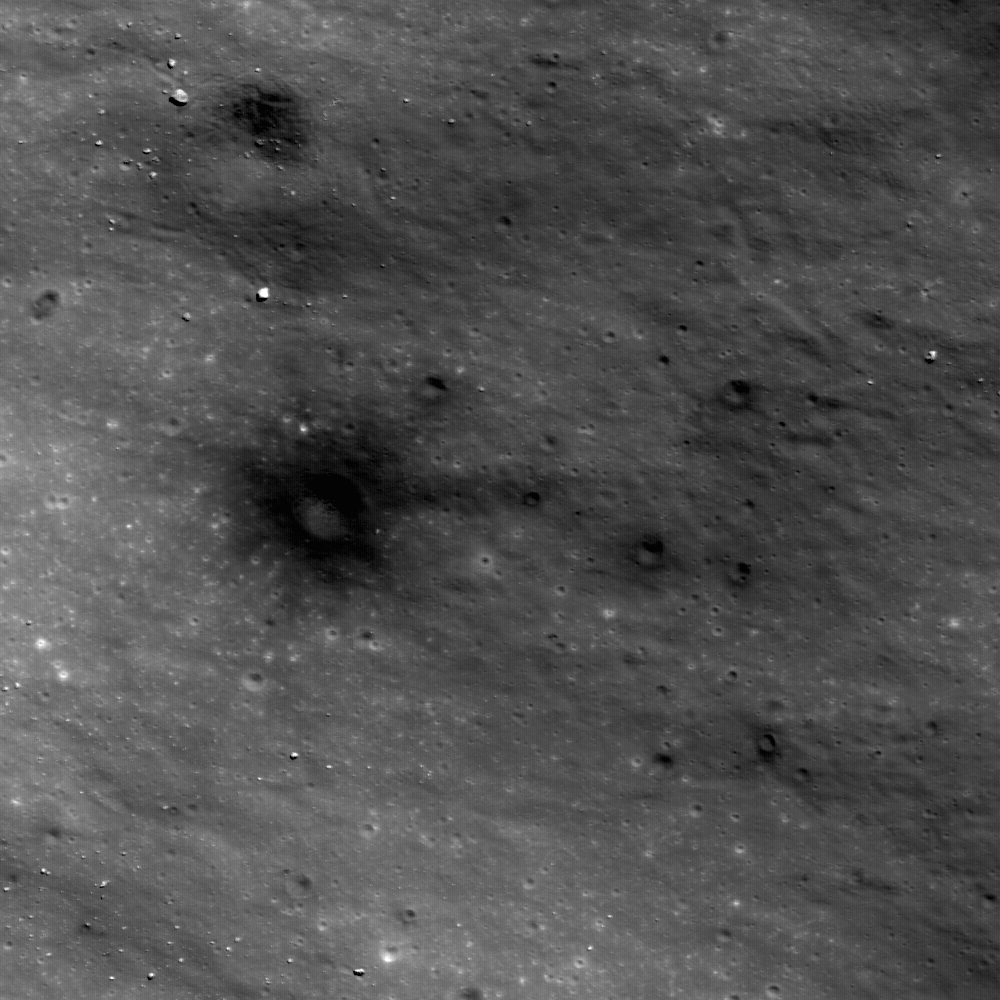
Dark Craters on a Bright Ejecta Blanket
Dark materials excavated by later small impacts show up clearly on the bright ejecta of a small lunar crater (800 meters in diameter) to the west. Image width is 640 meters [NASA/GSFC/Arizona State University].
Published on 16 Nov 2009
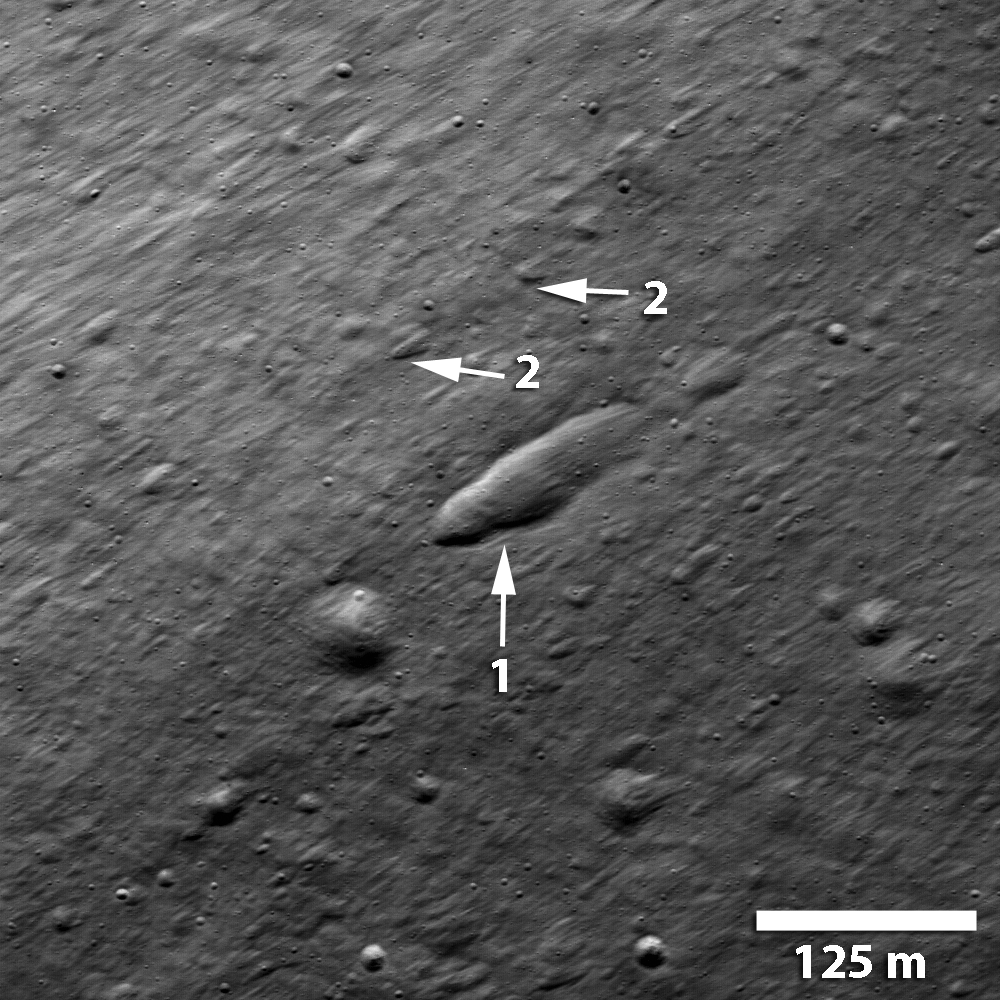
Ejecta Blanket Features
Interactions between the mobilized material excavated during impact and the pre-existing surface formed dune-like and trough-like features in the ejecta blanket of Galvani B, a 15-km diameter crater. North is up, image resolution is...
Published on 06 Nov 2009
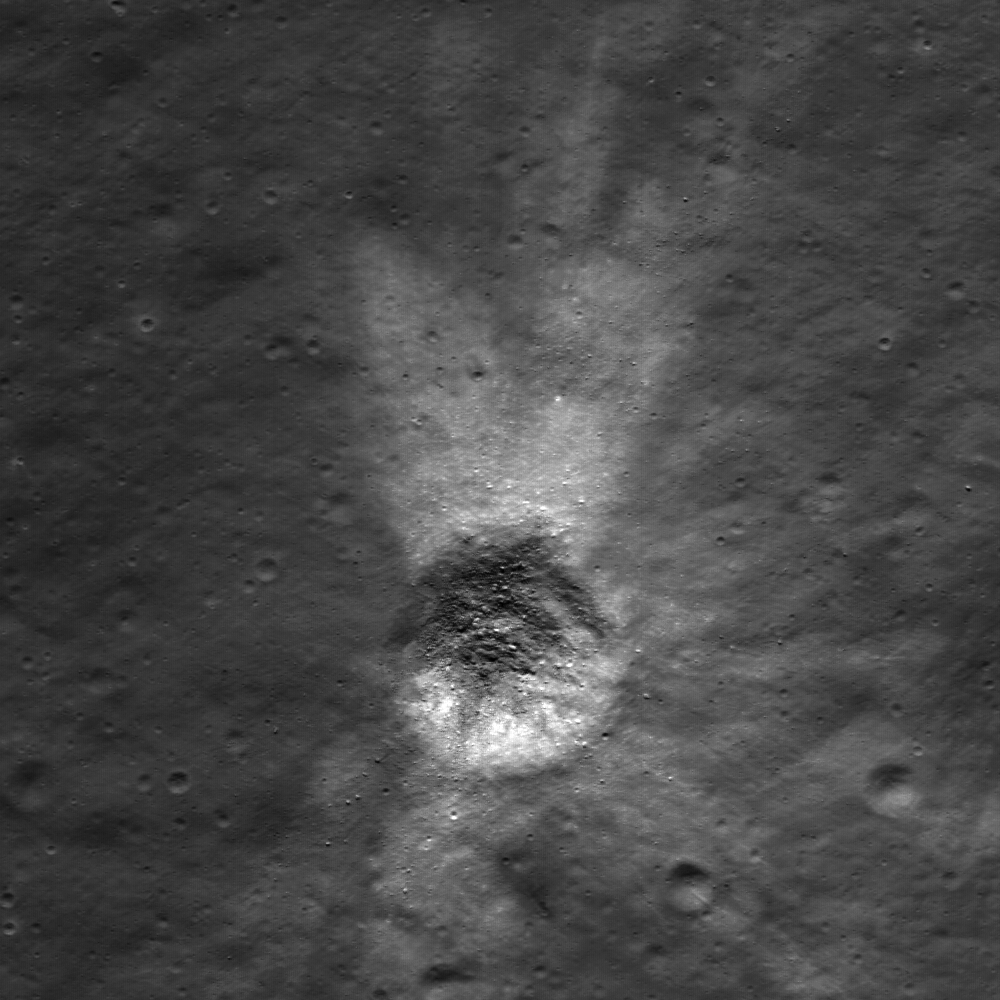
Asymmetric Ejecta
Distinctive asymmetrical ejecta surrounding a 140 meter diameter crater in the lunar highlands. Crater is located on the northeastern rim of the eroded (pre-Nectarian) crater Hommel at -52.9° N and 34.6° E. Image width is 600 meters and...
Published on 13 Oct 2009
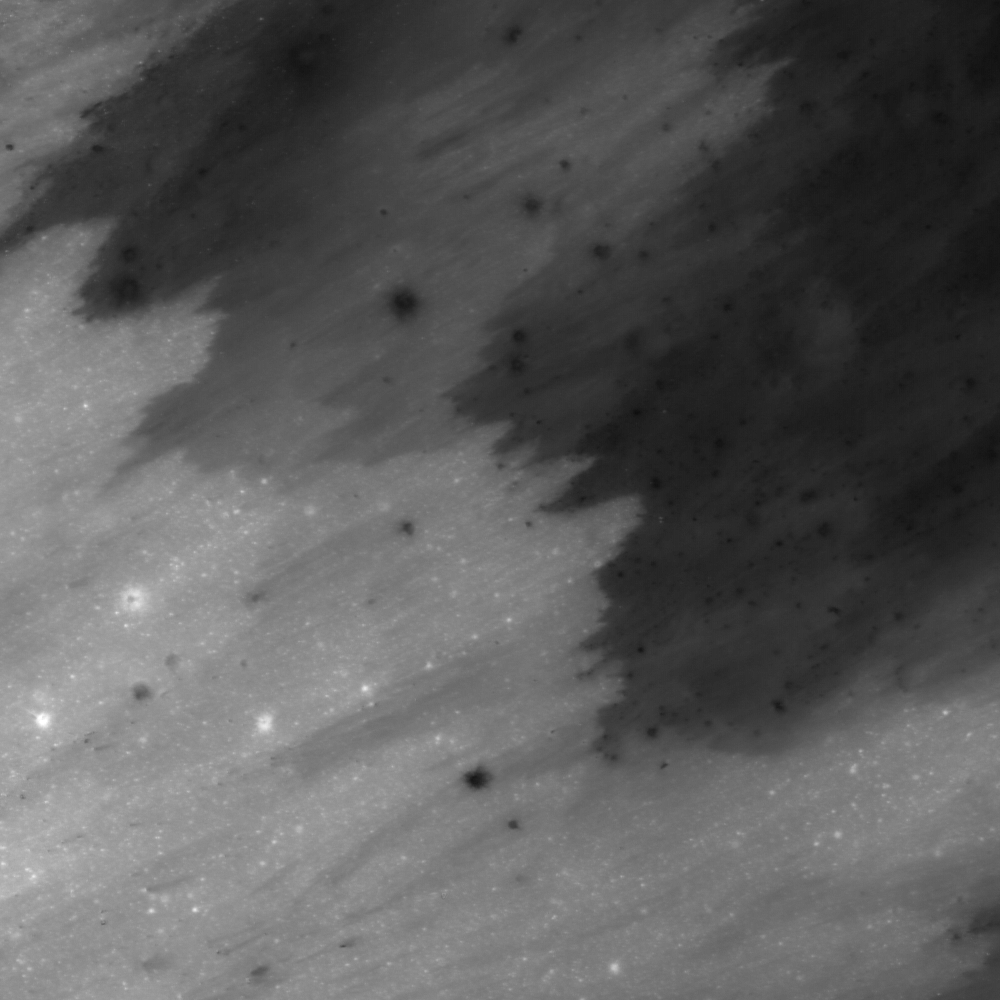
Ejecta sweeps the surface
Ejecta of a fresh crater streams across the the lunar highlands south of Mare Tranquillitatis. Image width is 520 m [NASA/GSFC/Arizona State University].
Published on 11 Oct 2009
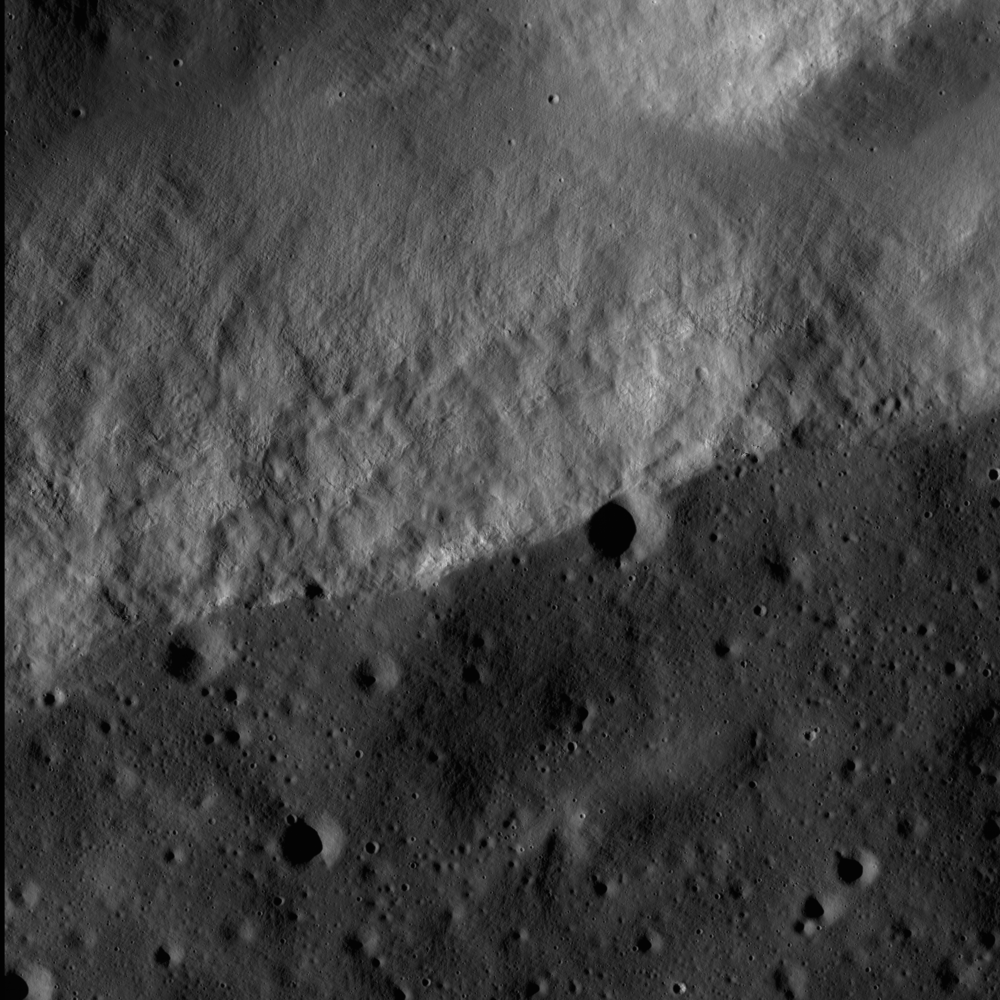
Timocharis Crater
The ejecta blanket and rim of Timocharis crater in southeastern Mare Imbrium. Image width is 7.2 km [NASA/GSFC/Arizona State University].
Published on 09 Sep 2009